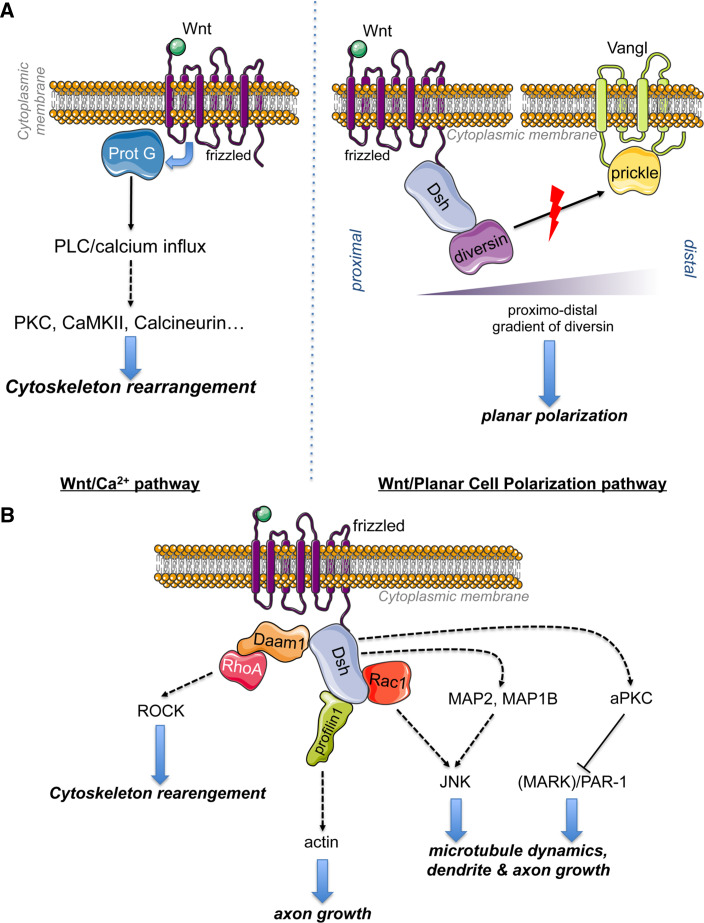Fig. 2.
a Wnt/Ca2 + pathway: binding of Wnt proteins on Fz receptors that signal through G proteins to activate phospholipase C leading to diacylglycerol and Inositol-triphosphate (IP3) generation. The resulting transient release of calcium from intracellular stores activates Ca2 + -dependent modulators, such as protein kinase C (PKC), calcium calmodulin mediated kinase II (CAMKII) and calcineurin to remodel the cytoskeleton. Wnt/PCP pathway: Fz–Dsh complex localized distally and Vangl-prickle localized proximally compete for Diversin recruitment. Upon Wnt stimulation, Diversin is recruited by Dsh to promote its activation to inhibit Prickle activity. b alternative pathways: Daam-1 (Dsh associated activator of morphogenesis 1) is a cytoplasmic protein that exists at an autoinhibited state [299]. Daam-1 is used by Dsh to interact with the small GTPase RhoA. Wnt stimulation leads to the disruption of the intramolecular inhibition of Daam1 [46]. The resulting activation of Daam-1 leads to the recruitment of the RhoA to activate ROCK kinase for cytoskeleton remodeling [47]. Daam-1 can also act through the actin-binding protein Profilin1 to modulate actin stability for axon growth [48]. Dsh can also activate Rac1 to stimulate c-JunN-terminal kinase (JNK) implicated in dendritic growth [7]. Alternatively, Dsh activates JNK1 through the phosphorylation of MAP2 and MAP1B for the modulation of microtubule dynamics. Dsh regulates atypical PKC (aPKC) activity [51] to inhibit Par-1 [52] or microtubule affinity regulating kinase 2 [51], inducing microtubule assembly and axon formation

